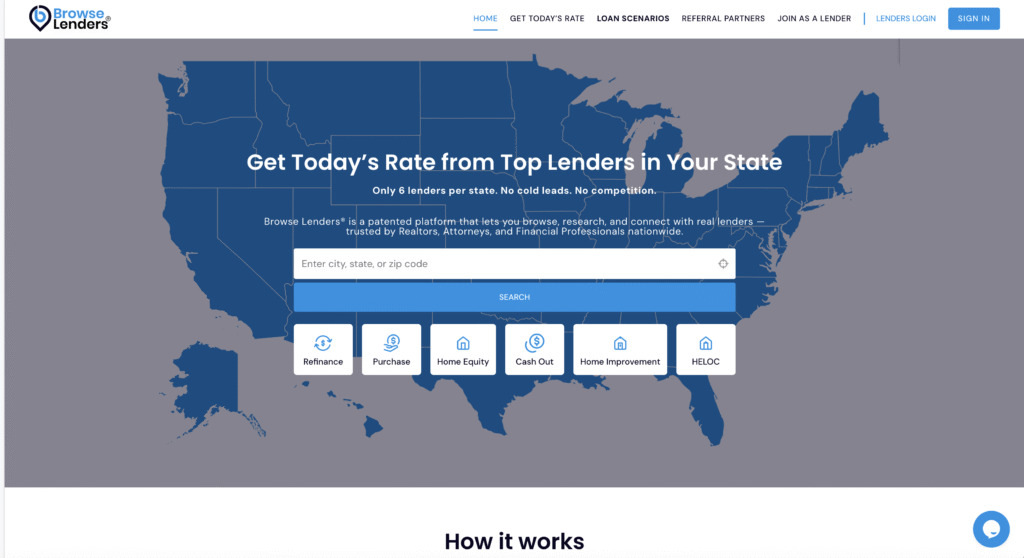WHAT UTILIZATION ACTUALLY SIGNALS (AND WHY IT IS MISUNDERSTOOD)
Most people believe utilization is simply “how much debt you’re carrying,” but that is not how institutions see it. From a lender’s perspective, utilization is not a number — it is a signal. It answers one specific question: Is this person in control of their borrowing, or is their borrowing controlling them?
This is why two people with the same balance can experience completely different lending outcomes. A borrower with $3,000 in balances across $30,000 in available credit is signaling surplus capacity — control, margin, stability. A borrower with $3,000 in balances across $3,800 of available credit is signaling financial tightness — low margin, high volatility, reduced shock absorption. The dollar amount is identical, but the signal is opposite.
Utilization is not a measure of financial struggle —
it is a measure of financial headroom.
Lenders don’t ask, “How much do they owe?”
They ask, “How much room do they have left before stress hits?”
This is why utilization is one of the most heavily weighted factors in how your profile is interpreted. It tells the system whether you operate with margin or on the edge of your capacity. Even if your payments are on time, high utilization signals vulnerability — which underwriting reads as risk exposure.
Consumers think utilization is about debt.
Institutions know utilization is about control.
The Score Estimator tells you what the system will conclude about your financial control. Utilization tells the system whether control appears sustained or fragile.
This section of your readiness journey is about understanding that utilization is not a math problem — it is a signal management strategy. Until you manage the signal correctly, the system will assume pressure exists, even if your income is strong.
This is why readiness begins with utilization — because utilization is the most visible indicator of control.
WHY UTILIZATION IMPACTS YOUR MIDDLE CREDIT SCORE® MORE THAN ANY OTHER VISIBLE FACTOR
Most borrowers are told that “payment history is the biggest factor in your score,” which is technically true — but misleading in practice. Payment history is static once established. Utilization is active and continuously measured. It is the one factor that institutions can re-interpret every single month, which means it is the clearest and most current indicator of whether you are managing your financial capacity or leaning on it.
That is why utilization has such a substantial real-time impact on your Middle Credit Score®: it is the closest thing lenders have to a “live health check” on your financial stability.
A borrower with a strong payment history but high utilization is interpreted as currently strained, not historically reliable.
A borrower with modest history but consistently low utilization is interpreted as currently stable, even before deep underwriting begins.
This is also why consumers are often shocked to see large drops in their middle score without any late payments — the system is not punishing the debt; it is reacting to perceived compression of capacity.
When utilization is high:
- The system assumes reduced margin
- Reduced margin = higher fragility
- Higher fragility = increased lender management cost
When utilization is low:
- The system assumes surplus capacity
- Surplus capacity = higher stability
- Higher stability = lower lender management cost
Most borrowers think utilization is a financial metric.
Lenders treat it as a behavioral reliability metric.
And because the Middle Credit Score® is the governing underwriting reference point — the very number used to classify readiness — utilization directly influences how favorably or cautiously you will be treated before a human ever views your application.
The reason utilization matters so much is simple:
It reveals whether you are operating from choice or from pressure.
HOW INSTITUTIONS USE UTILIZATION TO FORECAST YOUR FUTURE BEHAVIOR
Most consumers assume utilization reflects the past — how much of their credit they’ve recently used. But underwriting doesn’t read it backwards. It reads it forward. Utilization is treated as a forecasting signal — a predictor of how you are likely to behave under continued financial stress or changing conditions.
This is why utilization is weighted so heavily during early profile assessment: it gives the institution a forward-looking probability test without requiring additional documentation. A borrower operating with 60–80% of available credit is signaling: “I am operating near my ceiling — if anything shifts, I lose stability.” A borrower operating at 5–15% is signaling: “Even if something shifts, I have room to absorb it.”
To a consumer, the difference looks like a number.
To underwriting, the difference looks like future risk exposure.
This is how the system thinks:
| If Utilization is High | Institutional Interpretation |
|---|---|
| “This borrower needs credit to stay afloat.” | Dependency risk |
| “If income dips, they have no margin.” | Instability risk |
| “They might add more debt soon.” | Escalation risk |
| “Future late payments are more likely.” | Loss forecasting risk |
Institutions are not asking:
“Can this person pay their bills today?”
They are asking:
“How likely is it that we will need to manage this borrower tomorrow?”
That’s why utilization is not about the total amount borrowed — it’s about the proximity to stress. The closer a borrower operates to their ceiling, the more the system expects pressure, volatility, and breakdown.
Consumers focus on dollars.
Lenders focus on distance from vulnerability.
This is also why lowering utilization can move a Middle Credit Score® faster than almost any other adjustment — because it instantly changes the forecast of your future risk, not just the record of your past behavior.
Score doesn’t drive trust — stability does.
Utilization is stability in numeric form.
WHY UTILIZATION HAS “THRESHOLD MOMENTS” THAT CHANGE HOW YOU ARE TREATED
Most borrowers think utilization is graded on a sliding scale — the lower the better, the higher the worse. But institutions don’t respond to utilization gradually, they respond to it in thresholds. A borrower can move from “acceptable” to “flagged” in a single statement cycle — not because the balance changed drastically, but because the signal crossed a threshold line.
This is why two people with nearly identical utilization percentages can be treated completely differently: underwriting does not react to numbers — it reacts to risk triggers.
There are four primary utilization thresholds underwriting behavior is trained to respond to:
| Utilization Range | What the System Interprets |
|---|---|
| 0–9% | Surplus capacity / low volatility |
| 10–29% | Controlled borrowing / healthy cushion |
| 30–49% | Noticeable reliance / rising pressure |
| 50%+ | Active strain / future instability risk |
The borrower sees “I only went from 29% to 33%.”
The system sees “This borrower has shifted from control → rising vulnerability.”
The borrower sees “I’m using what I have available.”
The system sees “They have less margin to absorb disruption.”
The thresholds matter more than the math — because the classification shifts the entire context of how your application will be handled.
Once a file crosses an internal utilization threshold:
- scrutiny increases
- pricing cushion decreases
- automatic approvals shrink
- friction rises
- leverage disappears
This is why someone can have perfect payment history yet still pay more than someone with less history but stronger utilization positioning — underwriting is not comparing biography; it is comparing resilience.
Consumers keep asking:
“Is this balance high?”
Institutions are asking:
“Does this balance force future risk?”
Utilization is not a reflection of how much you owe — it is a reflection of how close you appear to running out of room.
And once the system detects reduced room, it automatically assumes reduced reliability, which is exactly what drives unfavorable pricing, deposit requirements, added insurance load, or denied terms.
This is why controlling utilization is not optional in readiness —
it is the readiness signal.
BEFORE VS AFTER UTILIZATION CORRECTION
The fastest way to understand the power of utilization is to see how dramatically outcomes change without changing anything except the utilization signal. Income stays the same. History stays the same. Nothing in the borrower’s life improves — except the interpretation of their financial capacity.
This is why utilization is one of the most leveraged components of credit readiness: it is the one adjustment that can reposition you before any application is filed.
✅ Table 1: Interpretation Shift
| Before Utilization Correction | After Utilization Correction |
|---|---|
| Appears dependent on credit | Appears in control of credit |
| Near ceiling = high volatility | High headroom = low volatility |
| Underwriting expects strain | Underwriting expects resilience |
| Caution-based review | Confidence-based approval |
| Borrower is “managed” | Borrower is “trusted” |
✅ Table 2: Real-World Impact
| Without Control of Utilization | With Control of Utilization |
|---|---|
| Higher pricing | Lower pricing |
| Slower approvals | Faster approvals |
| More documentation | Fewer conditions |
| Limited options | Better product access |
| “Barely qualified” | “Clearly ready” |
The borrower often thinks:
“I just need to get my score up.”
But underwriting doesn’t promote a borrower because of points — it promotes them because of predictability.
Utilization is one of the clearest measures of predictability on the profile. It provides the lender with an immediate reference point for whether financial behavior is controlled or reactive. Once utilization improves, the institution no longer sees the borrower as pressure-based. Instead, they read the profile as margin-based — and margin is what underwriting treats as stability.
No dispute letters.
No rapid rescoring.
No new accounts.
Just one change: signal control.
This is why borrowers who correct utilization before applying often see better terms than borrowers with higher income or longer credit history who apply while utilization is signaling strain.
Readiness does not begin when you submit an application.
Readiness begins when your utilization communicates capacity.
WHAT LENDERS ACTUALLY REVIEW IN UTILIZATION (BEYOND THE PERCENTAGE)
Most people think lenders look at a single utilization number, but underwriting doesn’t rely on a snapshot — it reads a pattern. There are four hidden dimensions of utilization that influence how your profile is classified long before a human underwriter ever sees it:
✅ 1. Utilization Timing
The system records utilization at statement cut date, not when you pay it. A borrower who pays after the due date but before the statement date looks low-risk — a borrower who pays after the statement date looks strained, even if they technically paid on time.
This is why people say:
“My balance didn’t change but my score dropped.”
The balance didn’t matter — the reporting moment did.
✅ 2. Utilization Trend
Institutions don’t care that a borrower lowered utilization once. They look for trend stability — can you maintain low utilization over multiple cycles, or was the drop temporary?
A dip is not a signal of control.
A trend is.
✅ 3. Depth of Available Capacity
Two people with the same utilization percentage can be treated differently depending on how much total headroom they operate with.
Example:
- 25% utilization on $30,000 credit lines = $22,500 unused → stability signal
- 25% utilization on $3,000 credit lines = $2,250 unused → fragile signal
Same math — different security cushion.
✅ 4. Direction of Use
The system reads whether your balances are declining over time or creeping upward. A rising trend signals dependence; a declining trend signals regained control. This directional signal influences readiness more than most borrowers ever realize.
Why this matters for readiness
Underwriting is not trying to determine whether you can pay your debt — it is calculating how close you appear to needing credit as a safety net, rather than using it as a financial tool.
If credit appears to be your breathing room, risk assumptions increase.
If credit appears to be your surplus, risk assumptions decrease.
This is the nuance that most consumers never get taught — but that institutions rely on.
Utilization is not a score input —
it is a pattern-based stability reading.
MISTAKES THAT SABOTAGE UTILIZATION (AND WHY MOST CONSUMERS NEVER CORRECT IT PROPERLY)
Most borrowers try to “fix” utilization the wrong way — either too late, too temporarily, or in a way that sends the opposite signal of what they intend. These mistakes don’t just slow improvement — they actively reinforce the perception of instability.
Below are the most common utilization mistakes that sabotage readiness:
❌ Mistake #1 — Paying after the statement date
Consumers think “on-time” is what matters, but underwriting reads utilization at the statement cut, not after payment. A perfectly paid account still reports as strained if the payment lands too late to be recorded.
❌ Mistake #2 — Paying cards to zero too often
This looks like balance shock, not control. The system sees volatility — a swing from high to zero with no pattern consistency, which appears reactionary, not stable.
❌ Mistake #3 — Chasing the highest score instead of the healthiest signal
Borrowers try to manipulate utilization to force a score boost, rather than establishing a sustained headroom pattern. The system rewards ongoing capacity, not temporary dips.
❌ Mistake #4 — Closing old cards after paying them off
This destroys available headroom and shortens history — two core stability indicators. The borrower thinks they are “simplifying.” The system reads “contraction and reduced cushion.”
❌ Mistake #5 — Adding new credit lines during strain
Borrowers apply for new cards just to “increase limit cushion,” but underwriting sees expansion during instability — a major risk flag.
✅ The institutional reading of these mistakes
| Borrower’s Intention | System’s Interpretation |
|---|---|
| “I’m fixing it.” | “They’re scrambling.” |
| “I’m trying to optimize.” | “They’re under pressure.” |
| “I’m paying everything down fast.” | “Instability spike detected.” |
| “I’m closing unused cards.” | “Capacity shrinking.” |
This is why most people fail to correct utilization effectively — because they are trying to fix a score instead of fixing a signal. The two are not the same.
Utilization is not about debt payoff — it is about demonstrating controlled distance from pressure. Until borrowers understand that distinction, they unintentionally look volatile even while trying to improve.
Signal, not balance, is what the system reacts to.
UTILIZATION AS LEVERAGE: HOW TO USE IT STRATEGICALLY BEFORE YOU APPLY
Utilization is not a number you “fix” — it is a signal you manage. The goal is not to have low utilization once; it is to demonstrate controlled capacity long enough that the system views you as a stable operator instead of a pressured borrower. Once the institutional interpretation shifts, every decision downstream becomes easier, faster, and cheaper.
Here is the correct strategy sequence to use utilization as leverage:
✅ Step 1 — Treat utilization as a readiness checkpoint
Before adjusting anything else on the credit profile, utilization reveals whether your current financial posture looks stable from the outside. If the signal reads as strained, timing the application becomes more important than the application itself.
✅ Step 2 — Manage utilization before chasing other improvements
Many consumers start with disputes or new accounts — but institutions don’t care about cleanup if the signal still reflects strain. Utilization is the “first proof” of stability. When utilization is corrected, everything else improves faster.
✅ Step 3 — Maintain low utilization long enough for the signal to “season”
One billing cycle lowers a score temporarily.
Multiple cycles demonstrate control.
Readiness is not created by a payment — it is created by pattern stability.
✅ Step 4 — Use re-estimation to confirm timing
Once utilization stabilizes, the Score Estimator becomes your confirmation tool. Instead of hoping your changes were enough, you validate that the system now interprets you as financially controlled.
✅ Step 5 — Apply when positioned, not when anxious
Borrowers who apply too early lose leverage — not because they are unqualified, but because their signal is premature. Borrowers who apply after utilization is seasoned enter the system advantage-ready.
Why this matters for the Middle Credit Score®
The Middle Credit Score® is the institution’s reference point not because it represents fairness, but because it represents predictability. Utilization is the most immediate predictor of ongoing stability — therefore it is the most direct behavioral input affecting your readiness.
Payment history explains who you were.
Utilization explains who you are right now.
That is why lenders use it as the first interpretation trigger — and why correcting utilization early is the fastest way to change how your file will be treated once it enters underwriting.
The Readiness Bridge
Once utilization is positioned correctly:
- The borrower is no longer seen as operating under pressure.
- The system shifts from conservative treatment to confident treatment.
- The Middle Credit Score® begins reflecting true readiness, not temporary rebound.
From here, the next stage of the platform — your dispute strategy, debt planning, budgeting, payoff sequencing, and eventually lender selection — all operate from a foundation of control, not recovery.
Because utilization is the first place where the system decides:
Are you surviving, or are you managing?
When the answer becomes “managing,” readiness begins — and leverage follows.






